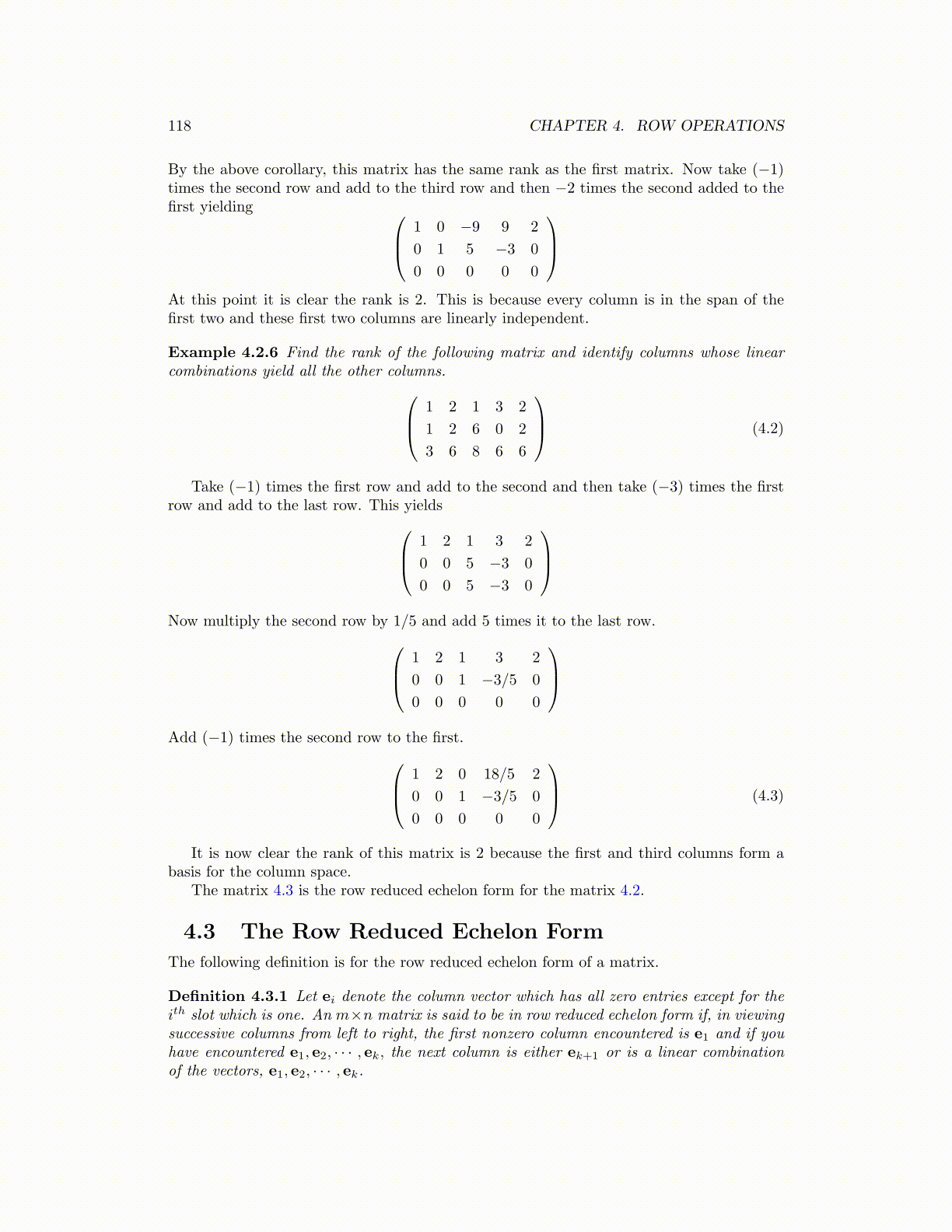
118 CHAPTER 4. ROW OPERATIONS
By the above corollary, this matrix has the same rank as the first matrix. Now take (−1)times the second row and add to the third row and then −2 times the second added to thefirst yielding 1 0 −9 9 2
0 1 5 −3 0
0 0 0 0 0
At this point it is clear the rank is 2. This is because every column is in the span of thefirst two and these first two columns are linearly independent.
Example 4.2.6 Find the rank of the following matrix and identify columns whose linearcombinations yield all the other columns. 1 2 1 3 2
1 2 6 0 2
3 6 8 6 6
(4.2)
Take (−1) times the first row and add to the second and then take (−3) times the firstrow and add to the last row. This yields 1 2 1 3 2
0 0 5 −3 0
0 0 5 −3 0
Now multiply the second row by 1/5 and add 5 times it to the last row. 1 2 1 3 2
0 0 1 −3/5 0
0 0 0 0 0
Add (−1) times the second row to the first. 1 2 0 18/5 2
0 0 1 −3/5 0
0 0 0 0 0
(4.3)
It is now clear the rank of this matrix is 2 because the first and third columns form abasis for the column space.
The matrix 4.3 is the row reduced echelon form for the matrix 4.2.
4.3 The Row Reduced Echelon Form
The following definition is for the row reduced echelon form of a matrix.
Definition 4.3.1 Let ei denote the column vector which has all zero entries except for theith slot which is one. An m×n matrix is said to be in row reduced echelon form if, in viewingsuccessive columns from left to right, the first nonzero column encountered is e1 and if youhave encountered e1, e2, · · · , ek, the next column is either ek+1 or is a linear combinationof the vectors, e1, e2, · · · , ek.